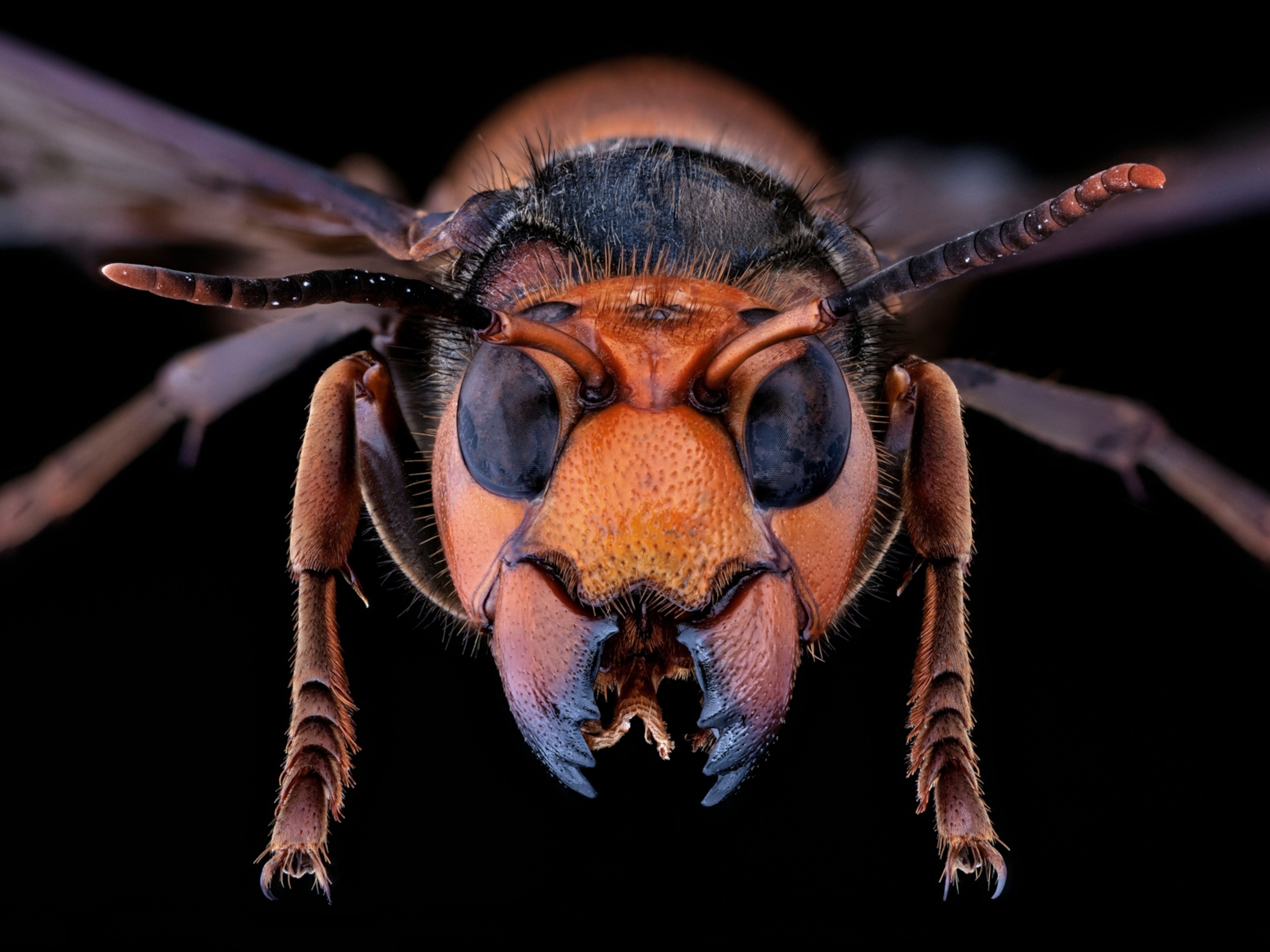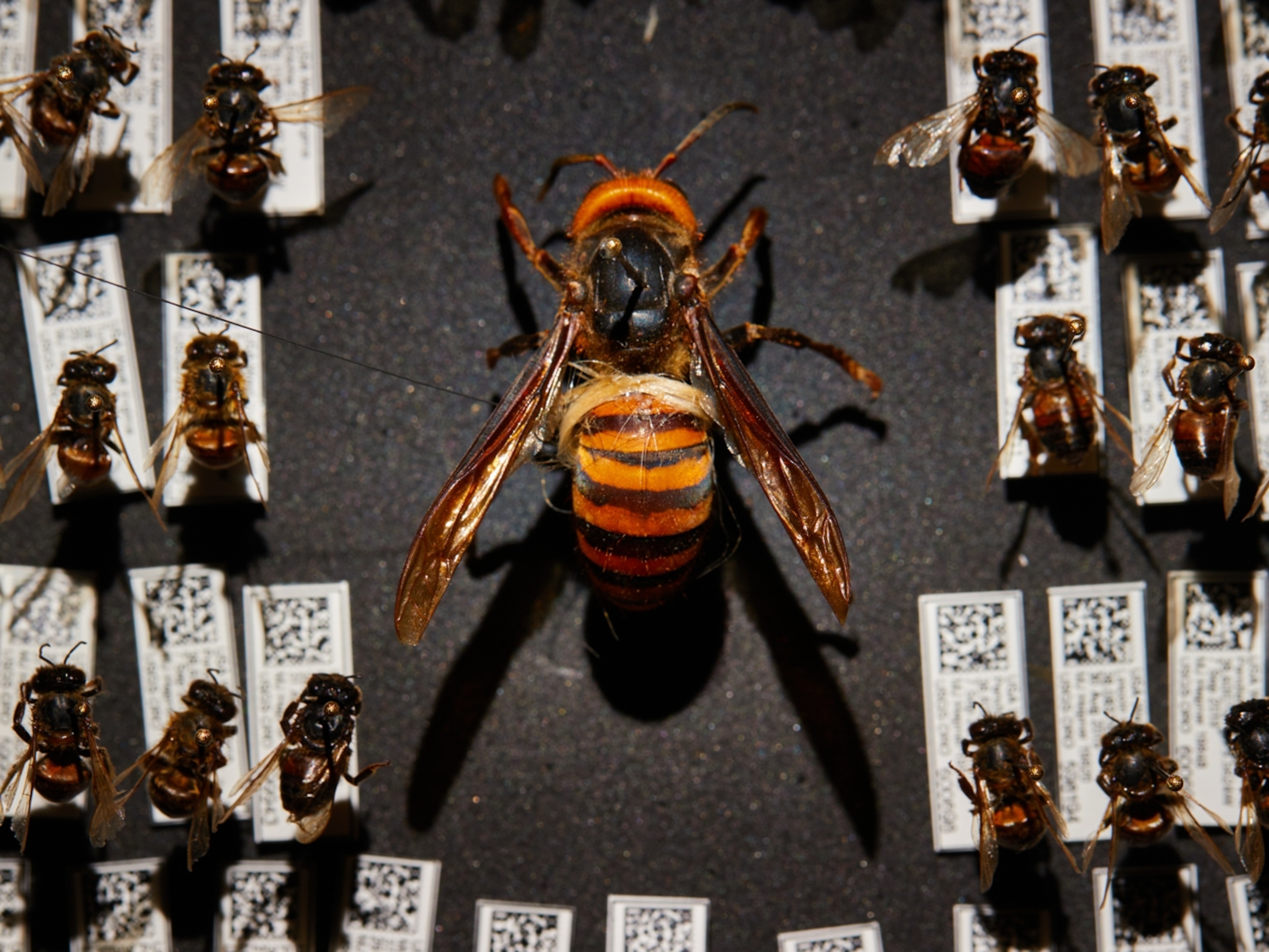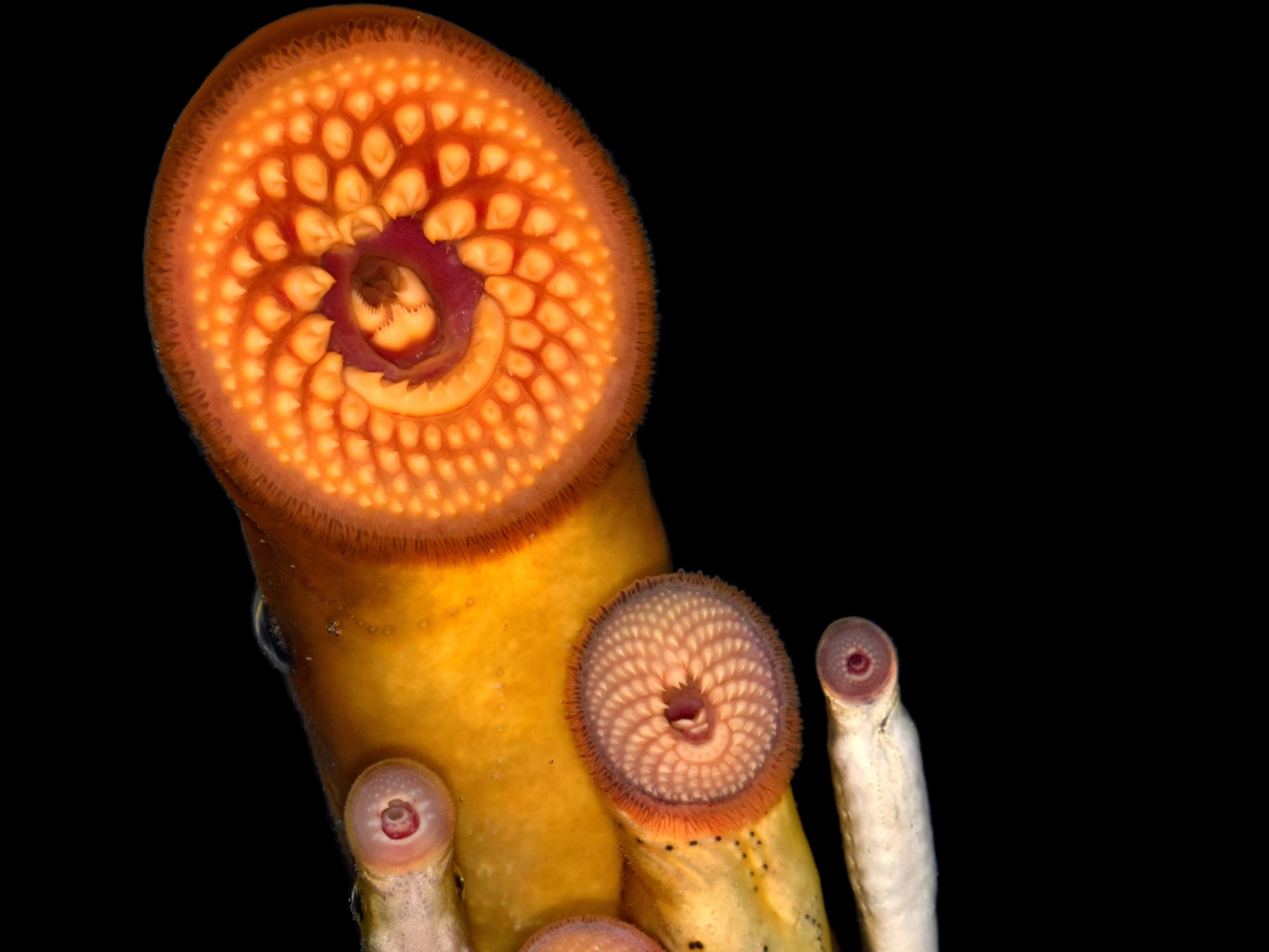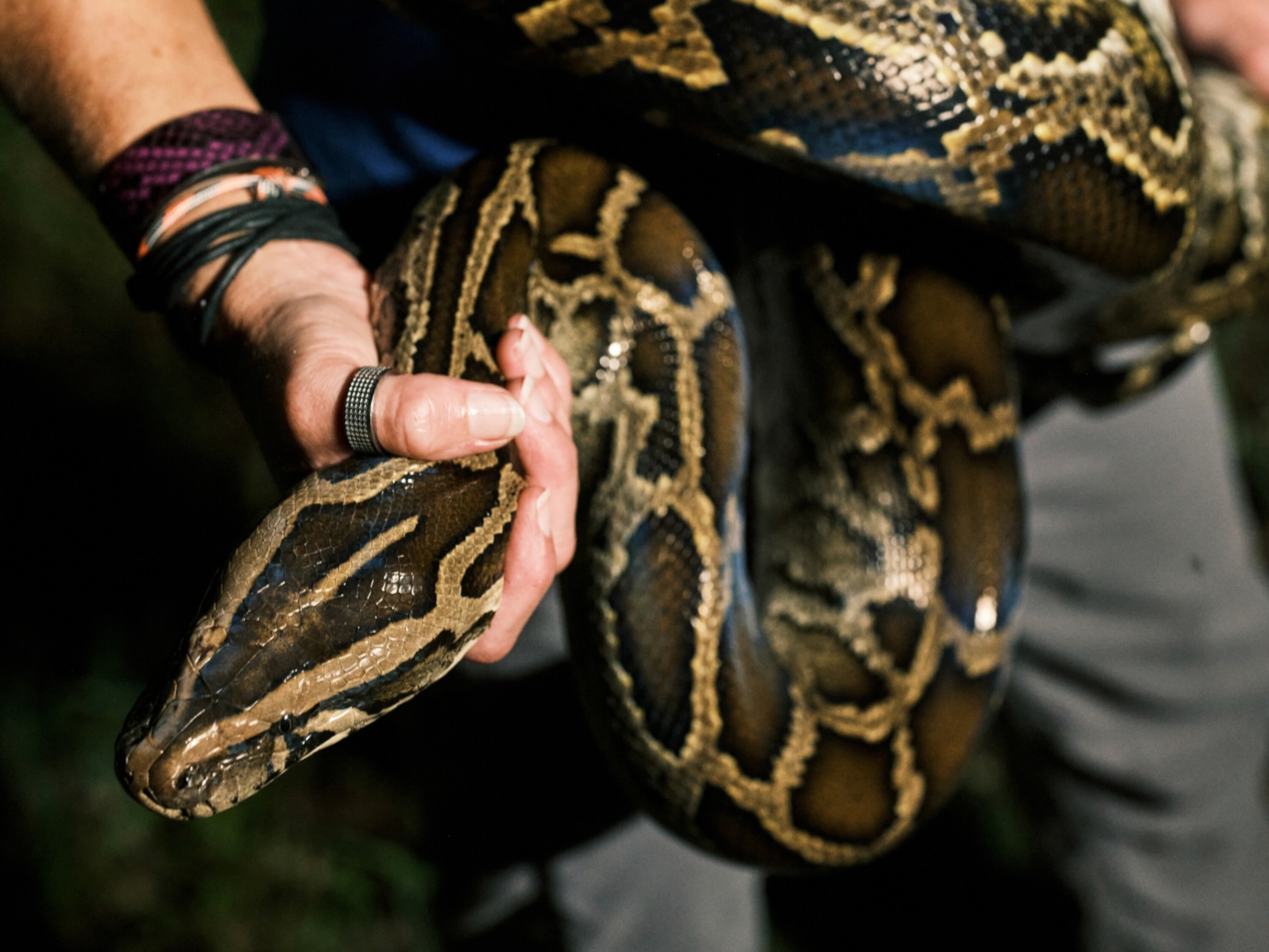‘Murder hornets’ wiped out in North America in rare victory
The world’s largest hornet, native to Asia, had arrived mysteriously in 2019, but intense eradication efforts prevented the species from spreading.
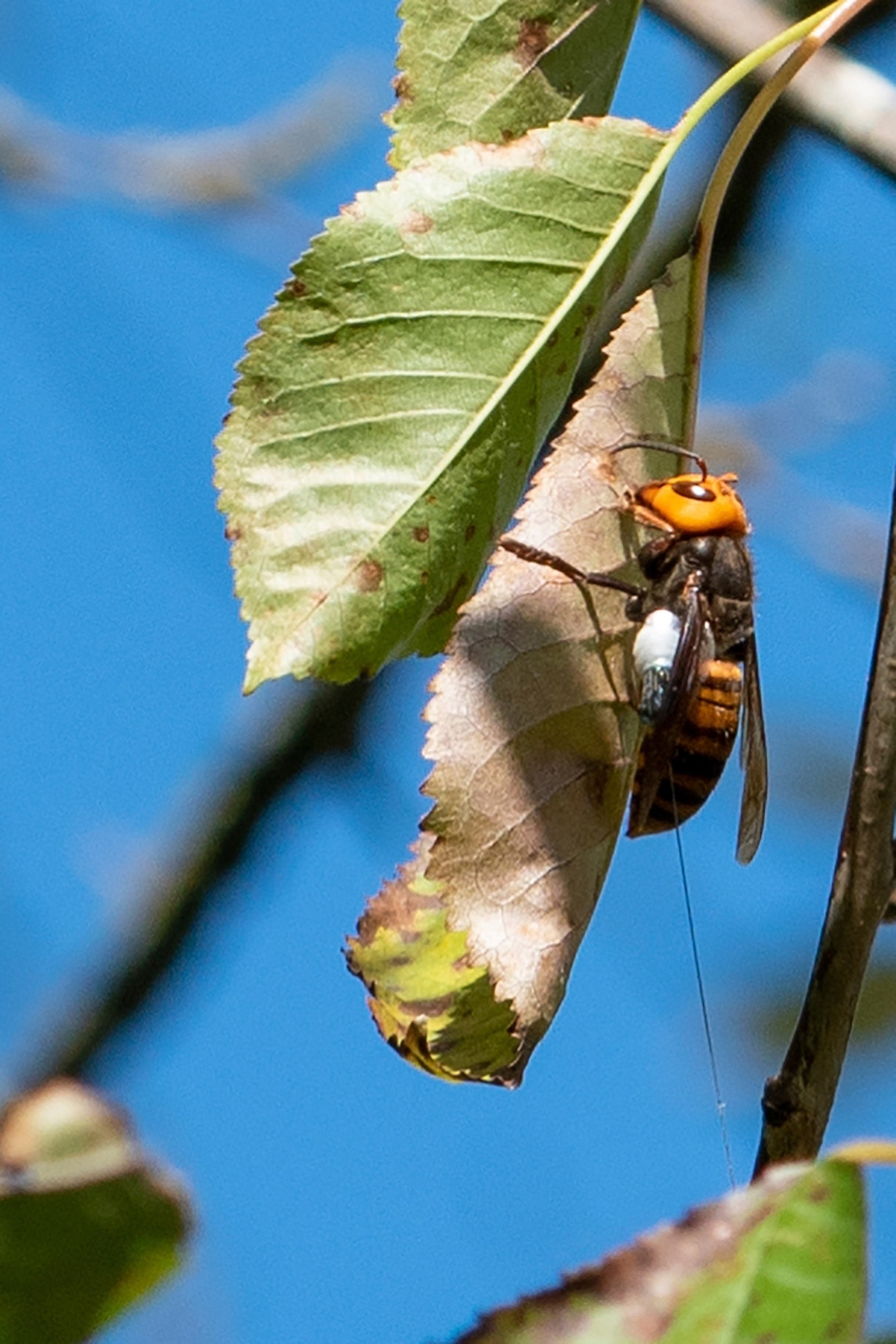
Northern giant hornets, popularly known as "murder hornets," have been wiped out in North America.
First spotted in northwestern Washington State and Canada's Vancouver Island in 2019, authorities at the time launched an aggressive plan to kill the harmful insects before they spread.
Just over five years later, scientists have accomplished their mission, federal and state representatives announced Wednesday.
“Eradicating an introduced species from the continental United States is a rare and monumental achievement,” Chris Alice Kratzer, author of The Social Wasps of North America, says in an email.
“It proves that the permanent removal of invasive species is possible, but only when given ample funding and public attention.”
The two-inch insects, the world's largest hornets, have a powerful sting and are known to kill off European honeybee colonies in as little as 30 minutes—both reasons why authorities wanted to get rid of them quickly.
The U.S. Department of Agriculture considers a non-native species “eradicated” after three years have passed since its last verified detection. (Read why 'murder hornets' got a new name.)
“It’s a regulatory term,” says Karla Salp, communications consultant with the Washington State Department of Agriculture. “Of course, that doesn’t mean they won’t be introduced again.”
An unknown arrival
No one knows for sure how northern giant hornets came to North America. But genetic testing strongly suggests that the insects found in Washington are not closely related to those on Vancouver Island. This makes scientists suspect that northern giant hornets were introduced in two separate incidents around 50 miles apart.
Unfortunately, while so-called “murder hornets” have become a household name, many other non-native and invasive species continue to cause problems in the U.S., but with much less support for their control. (Related: 'Murder hornet' mania highlights dangers of fearing insects and spiders.)
For instance, Salp says new introductions of spongy moths, which eat hundreds of different plants, occur in Washington State every year.
Likewise, Kratzer points to another large hornet, the yellow-legged hornet, accidentally brought from Europe into the U.S. state of Georgia in 2023. The species also preys on European honeybees, she says.
“Regardless, the successful control of any invasive species is worth celebrating!” Kratzer says.


